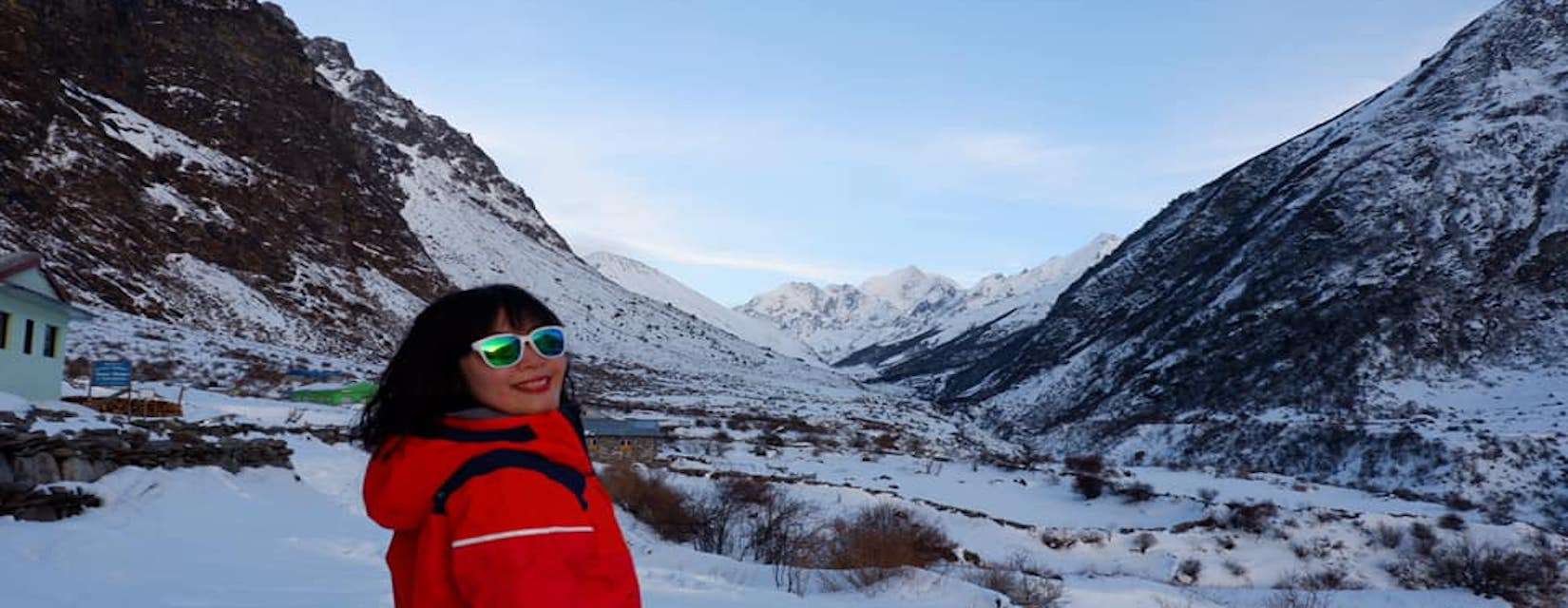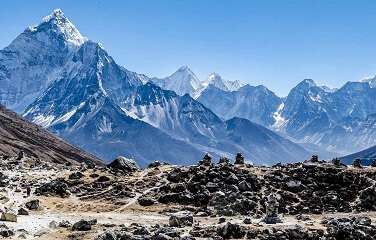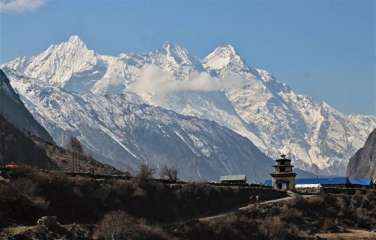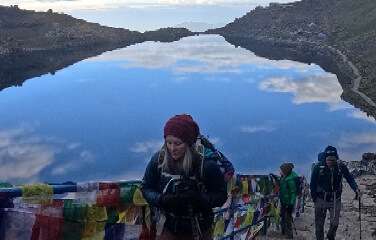Join with the best trekking Company
The local trekking company takes you full responsibility, as well as the company, provides a professional guide and strong porters, which would you have to hire. Trekking Company has the organization and infrastructure to help things go as smoothly as possible for Everest Base Camp Trek or all of the region treks. If you connect with the Local Trekking Company you don't need to worry about the communication challenges, navigate flight delays, emergency services, etc.
Acclimatization Days for Everest Base Camp Trek
Our Everest Base Camp Trek Package has the acclimatization or rest day between the trek. You need to make sure that your body is well acclimatized to the altitude. Therefore, a day or two acclimatizations is most important for this EBC Trek, as well as, you will cover a distance gaining more altitude, your body fit with high altitude, the body adapts well to the atmosphere, and you will explore side hike of the trek.
Well packing for Everest Base Camp Trek
You should pack your necessary Equipment for trekking it's most important, the EBC Trek begins from Lukla after having a short scenic flight from Kathmandu, and you have to take weight limitation for a small flight. Lukla flight includes 15kg of weight including your hand luggage. We, the Himalayan Frozen Adventure Team suggest you pack only the equipment really need on the trek. You have the option to buy daily usages things in Namche Bazaar to minimize the limitation of your luggage on the Lukla flight. The porter will carry around 20 to 25kg.
What you have to do to prepare for flight delays
Everest Base Camp Trek is the most popular trekking route in Nepal, each year thousands of trekkers come to visit Mount Everest, therefore plus 1 or 2 days extra for Lukla flight. The flight from Kathmandu to Lukla is the most scenic, (Kathmandu-Lukla-Kathmandu) flight a few hours may be late, or one, two, or more days may be canceled for bad weather reasons. You might be lucky and get to the airport on a flight immediately, but more often than not, you’ll experience a wait of at least a few hours before your flight. We, Himalayan Frozen Adventure recommend preparing for a delay by bringing a book, snacks, and a little extra patience. Prepare for your Flight Delays from Kathmandu-Lukla-Kathmandu is most important for Everest region trekking.
Don't forget to carry your own snacks
During the Everest region trekking, you can found different kinds of snacks in the lodge but it will be a little expensive. Each day you have to walk around 6 to 7 hours but all of the trail you can't found the lodge and favorite snacks. We suggest you carry your own snacks from the city or lower place of the Everest region.
Acute Mountain Sickness (AMS)
AMS or altitude sickness is one of the main risks while traversing at high altitudes. The main region behind getting AMS is when the body doesn't adjust to the lower level, and the result can be deadly. So it is very important to take proper measures on time. Gaining altitude with constant pace and proper acclimatization days will help reduce the chances of getting AMS.
Similarly, you also have to keep yourself hydrated during the trek, therefore, drink enough water and avoid alcoholic drinks as it dehydrates the body. If you are planning to trek in one of the adventurous trails of Nepal then do keep the above things in your mind.
Symptoms of altitude sickness
- Difficulty in sleeping
- Dizziness or light-headedness
- Fatigue
- Headache
- Loss of appetite
- Nausea or vomiting
- Shortness of breath with exertion
Preventive measures
- Include an adequate number of rest days in the itinerary
- Keep yourself hydrated
- Do not drink alcoholic beverages
- Do not gain more than 500 meters in a day
- Try to spend the night in lower altitude
- Acclimatize properly at a lower altitude
- Inform your guide immediately if any of the symptoms you see
- Do not push yourself
Better to don't trek solo
Trekking around the Mount Everest region is not to be safe every time for the solo trekker. You can fell hard to manage the lodge, food, found the trail, and also can be any unwanted accident. This trek is one of the highest altitude routes in the world as well as can come problem of altitude sickness. If you don't enter this problem then please hire a local guide and porter. The guide will make your journey pleasant and accompany you in times of danger, who will succeed in winning your heart.
Don't carry too much
During the trek Himalayan Frozen Adventure Company provides a strong trekking porter during the trek with a duffel bag. You just carry your valuables, prescriptions, extra layers, rain gear, water, camera, snacks, and sunblock. The things you need during the day as you won’t have access to your duffel until you reach the tea house in the evening. Don't carry overpack your daypack because you can be tried, therefore be comfortable and enjoy your day.
Don't use Drone in the Everest region
Everest region does,t allow to use drones because it's a heritage site. Without community permission is strictly prohibited, so be careful don't try to use a drone, you might be in trouble. Just happily enjoy your trek.
Respect the culture
During the trekking, we can get amazing Sherpa culture, there we can see some notice, we have to follow that notice rule and regulation.
Safe to Travel
Make you safe to travel is our top priority responsibility
During the trek, you will be the best training and experienced guide, who came from the high region of Himalayan. Our guide will carry all necessary paper and essentials equipment with a first aid kit. In case, if our clients come to some emergency problems of mountain sickness and accident then we immediately send a rescue helicopter. Any region of the Himalayan treks will demand good health and fitness, so make healthy your body before joining the trip.
Everest Base Camp Trek Accommodation
Everest Base Camp Trek accommodations are Lodge and Teahouse. Around Kathmandu, we can find a good facility with comfortable accommodation at the Hotel. The Everest Base Camp Trek all accommodations are on a twin-shared basis. During the trek, Himalayan frozen Adventure will manage a room with attached washrooms. In the teahouse, we have to share the toilet. A single room is available in Kathmandu and the lower elevation trekking region but might be impossible to higher elevations.
Everest Base Camp Trek Meals
At Kathmandu has included only breakfast. During the Everest Base Camp Trek, all meals will be provided. In the Everest region, we can enjoy Nepalese food with international cuisine like Tibetan, Continental, Indian, Tibetan, Italian, etc. Through the trek, we have breakfast/lunch at the teahouse and Dinner will be at the lodge. You can choices different kinds of breakfast, lunch, and dinner by the menu.
Trek with Local Guide
We, Himalayan Frozen Adventure provides the deepest knowledge leader through the Himalayan Trekking, who has the ability to face challenges. The Nepal route is an adventure challenge where has different types of risks. During the trekking, you have might some risks like altitude sickness, weather conditions, wildlife attacks, and Fear of getting lost. But don't worry, the guide will solve this problem and make you feel safe with a free and delightful trip. The guide has a big role to play in making the journey contextual and excellent. The guide will make your journey pleasant and accompany you in times of danger, who will succeed in winning your heart.
Trekking Equipment
Trekking equipment is the essential material used during the trip to the Himalayas, which is used on a daily basis. Without trekking equipment, your trip may be unsuccessful so we request you please follow the list. If you have not time to buy in your country, so don't worry we can help to buy trekking equipment in Kathmandu. Himalayan Frozen Adventure Pvt.Ltd will make your precious time reference and entertainment.
Trekking Equipment Lists
HEAD
- Headlight
- Sun hat
- Warm hat and scarf
FACE
- Face wipes and towels
- Sunscreen +40
- Sunglass
Hands
- Waterproof & Snowproof Gloves
- Lightweight gloves
Body clothing
- Sleeping bag
- Down jackets
- Sport hiking t-shirts, preferably quick-drying
- Fleece jacket and sweaters
- Poncho and rain jacket
- Socks preferably cotton –mix
- Lightweight cotton trekking pants with folding option
Lists of Footwear
- Water/Snowproof Trekking Boots
- Socks preferably cotton sports socks but take some extra pairs
- Crampon (optional)
Essential gear
- Day Backpack above the 30 L
- Pack covers
- Thermos Bottel- hard bottle that can be used for boiled drinking water
Water peals
- Umbrella / Poncho
- Walking pole if you need it
- Thick Sleeping bag
- Deodorant
- Laundry soap
- Antibacterial Gel
- Toiletries
- Toothbrush
- Shampoo
Personal accessories
- Cell phone
- Watch
- Camera
- Money wallet with Money
- Padlocks
- Plastic bag
- Sewing kit
- Extra p photos and passport photocopies
First-aid Kit
- Diamox (acetazolamide)
- Lozenges
- Elastic bandages
- Moleskin
- Cotton bandages and band-aids
- Lancing needle
- Antibiotic eye-drops
- Thermometer
- Sling
- Paracetamol
- Antiseptic antibacterial cream or solution
- Painkillers
- Anti-emetic for nausea (not at high altitude)
- Loperamide to control diarrhea
- Norfloxacin or Cipro to cure diarrhea, other infections
- Oral rehydration salts





